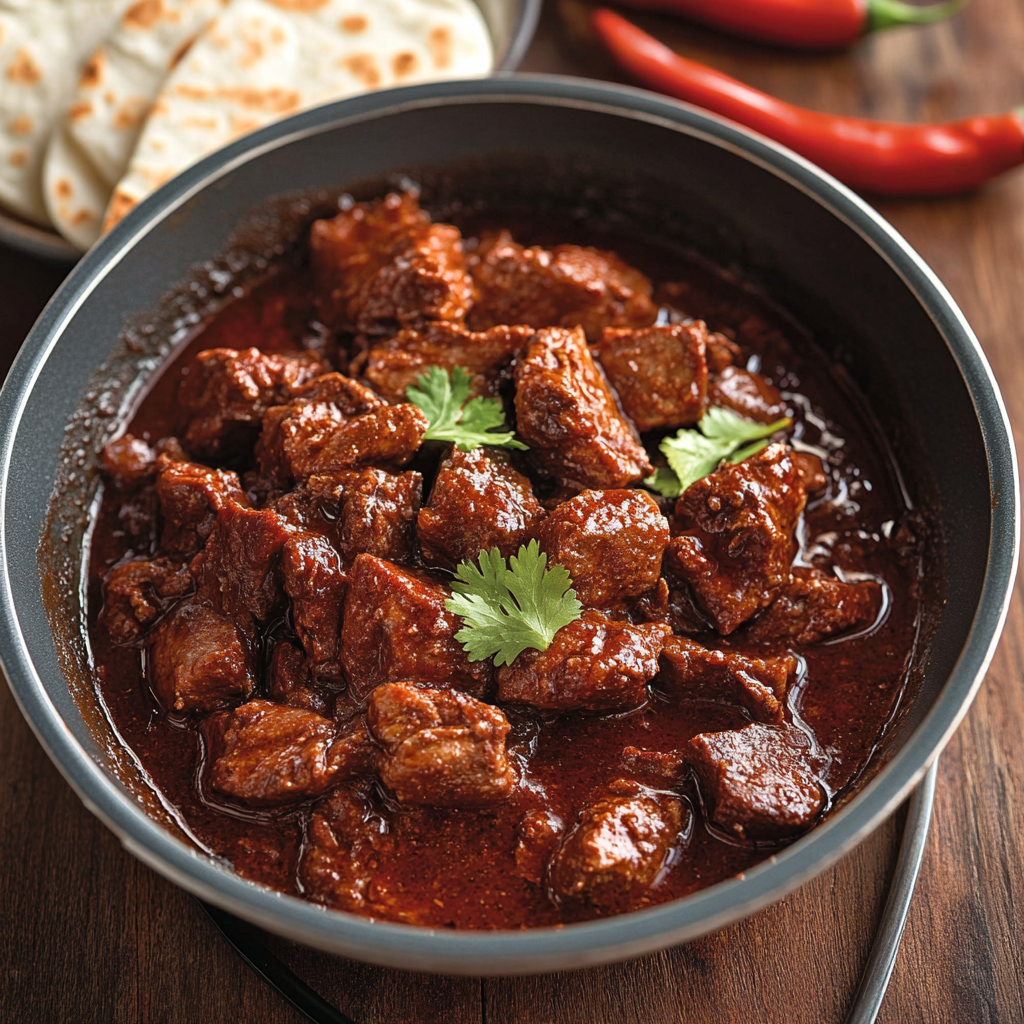The Honey Cake Medovik is a stunning display of delicate golden layers, each infused with the gentle sweetness of honey and sandwiched with a luscious, tangy sour cream filling. Its soft texture and rich flavors make it a centerpiece dessert that invites celebration and indulgence alike.
This traditional Russian cake is a labor of love that rewards patience, as the layers soften and meld beautifully after chilling. Whether served at a holiday table or as a special treat, its creamy sweetness and honey notes deliver a comforting, nostalgic experience that is sure to captivate anyone who tries it.
Full Recipe
Ingredients:
-
3 large eggs
-
1 cup granulated sugar
-
1/2 cup honey (preferably natural, mild-flavored)
-
1/2 cup unsalted butter
-
1 1/2 tsp baking soda
-
3 1/2 cups all-purpose flour
-
2 cups sour cream (for cream filling)
-
1 cup heavy cream (for cream filling)
-
3/4 cup powdered sugar (for cream filling)
-
1 tsp vanilla extract
Directions:
-
In a heatproof bowl over simmering water, whisk together eggs, sugar, honey, and butter until the mixture becomes warm and smooth. Remove from heat.
-
Stir baking soda into the warm mixture; it will foam slightly, indicating activation.
-
Gradually sift in the flour and mix until a soft dough forms. Divide the dough into 8 equal parts, wrap each in plastic wrap, and refrigerate for 30 minutes.
-
Preheat the oven to 350°F (175°C). Roll each dough piece on a floured surface into a thin round, about 8 inches in diameter.
-
Place each rolled dough onto a parchment-lined baking sheet and bake for 4-5 minutes until golden but still soft. Repeat for all layers.
-
For the cream filling, whip together sour cream, heavy cream, powdered sugar, and vanilla extract until smooth and creamy.
-
Once all cake layers have cooled, spread the cream evenly between each layer and stack the cake. Spread some cream over the top and sides.
-
Crumble any leftover scraps from trimming the cake layers and sprinkle on top as decoration.
-
Refrigerate the assembled cake for at least 6 hours, preferably overnight, to let flavors meld and cake soften.
Prep Time: 40 minutes | Cooking Time: 40 minutes | Total Time: 7 hours (including chilling)
Kcal: approx. 350 kcal per serving | Servings: 8
Introduction to Medovik: The Russian Honey Cake Tradition
Medovik, often referred to as Russian Honey Cake, is a beloved dessert that carries a rich cultural heritage. Originating in Russia during the 19th century, this cake has become a staple in many Eastern European households, symbolizing warmth, family gatherings, and festive celebrations. The cake’s hallmark is its delicate layers infused with honey, which lend a natural sweetness and distinct aroma. The creamy sour cream filling perfectly balances the sweetness of the honey, creating a dessert that is both indulgent and subtle.
The origins of Medovik are fascinating. It is said to have been created in the Russian Empire at a time when honey was a prized ingredient, cherished for both its flavor and supposed health benefits. The use of sour cream in the filling reflects the traditional dairy farming practices of the region, which emphasized fresh, fermented dairy products. Over time, this cake has traveled beyond Russia’s borders, embraced by many countries, each adding their own twists but always keeping the essence intact.
The Art of Layering: What Makes Medovik Unique
One of the most captivating features of Medovik is its layered structure. Unlike a simple single-layer cake, Medovik consists of multiple thin layers of honey-flavored dough that are baked individually and then stacked with a creamy filling in between. This meticulous process gives the cake its signature texture — tender yet slightly chewy layers soaked lightly by the moist cream, resulting in a melt-in-the-mouth experience.
The layering technique requires patience and precision. Each dough round is rolled out thinly and baked just enough to hold its shape without becoming too crispy or dry. The layers are then cooled before being generously spread with the cream mixture. Once stacked, the cake is refrigerated for several hours or overnight, which allows the layers to soften as they absorb the cream. This resting time is crucial because it transforms the cake from a collection of separate layers into a harmonious, unified dessert.
The Flavor Profile: Honey, Sour Cream, and More
Medovik’s flavor profile is a delicate balance of sweet, tangy, and creamy notes. The honey used in the dough provides a rich, floral sweetness that is both fragrant and comforting. It’s important to use a mild, natural honey so that the flavor is prominent but not overpowering. The sour cream in the filling introduces a gentle tanginess that cuts through the sweetness, giving the cake depth and complexity.
Additional flavor enhancements such as vanilla extract in the cream can add warmth and aromatic complexity. Some variations may incorporate a hint of lemon zest or nuts in the layers or as a garnish to introduce textural contrast and enhance the sensory experience. The subtle interplay of these ingredients creates a cake that is neither too sweet nor too rich, making it appealing to a wide range of palates.
Cultural Significance and Occasions for Medovik
Medovik holds a special place in Russian and Eastern European culture. It is often prepared for special occasions such as birthdays, weddings, holidays like Christmas and Easter, and other family gatherings. The cake’s elegant appearance and layered complexity make it a showstopper dessert, ideal for celebrations where presentation and taste matter.
Beyond its role as a celebratory dish, Medovik is also a comfort food, evoking nostalgic memories for many who grew up with it. The tradition of making the cake often involves family members working together, from rolling the thin dough layers to mixing the cream filling, reinforcing bonds and passing down culinary knowledge through generations.
Tips and Tricks for Perfecting Your Medovik
Creating an authentic Medovik at home can be a rewarding but challenging endeavor. Here are some insider tips to help you achieve the perfect cake:
-
Use quality honey: The flavor of the honey directly influences the cake’s taste. Opt for natural, mild-flavored honey to avoid bitterness or overpowering sweetness.
-
Roll the dough thinly and evenly: Uniform layers ensure the cake stacks neatly and bakes consistently. Use a light dusting of flour to prevent sticking, but avoid adding too much flour to keep the dough tender.
-
Don’t overbake: The layers should be golden but still soft. Overbaking makes them dry and brittle, which can affect the cake’s texture.
-
Chill the cake well: Refrigeration allows the layers to absorb the cream and develop the soft, cohesive texture Medovik is known for. Patience here is key — overnight chilling yields the best results.
-
Experiment with cream: While traditional sour cream and heavy cream frosting is classic, some variations include mascarpone, condensed milk, or even whipped cream for different textures and flavors.
Health Considerations and Nutritional Insights
While Medovik is undeniably delicious, it’s also a rich dessert that should be enjoyed in moderation. The cake’s main ingredients — eggs, butter, honey, sugar, sour cream, and cream — contribute to its calorie and fat content. However, honey, a natural sweetener, provides a better alternative to refined sugar, containing antioxidants and trace minerals.
For those seeking lighter versions, adjustments can be made by reducing sugar or using lower-fat dairy alternatives. Still, the traditional recipe is designed to be a treat, perfect for special occasions rather than everyday indulgence.
Variations and Modern Twists
Medovik is versatile and lends itself well to creative reinterpretations. Contemporary bakers have introduced many variations, including chocolate-infused layers, nut toppings like walnuts or hazelnuts, and alternative fillings such as cream cheese or dulce de leche. Some recipes incorporate spices like cinnamon or cardamom to add warmth.
These adaptations keep the classic spirit alive while catering to modern tastes and dietary preferences. Vegan and gluten-free versions have also emerged, using plant-based creams and alternative flours, expanding the cake’s accessibility.
Conclusion
Medovik, the Russian Honey Cake, is much more than just a dessert; it is a cultural icon filled with history, tradition, and flavor. Its signature honey-infused layers combined with a luscious sour cream filling offer a unique taste experience that has captivated dessert lovers for centuries. The careful craftsmanship involved in creating the thin, tender layers and the slow melding of flavors in the fridge makes this cake a labor of love and patience.
Whether you are making Medovik for a festive occasion or simply to enjoy a slice of rich culinary tradition, this cake never fails to impress. Its harmonious blend of sweetness and tanginess, paired with its soft, elegant layers, creates a dessert that is both comforting and sophisticated. Embracing this recipe means inviting a piece of Russian heritage into your kitchen, perfect for sharing with family and friends. With a bit of practice and the right ingredients, you too can master this exquisite honey cake and delight in every delicious bite.








